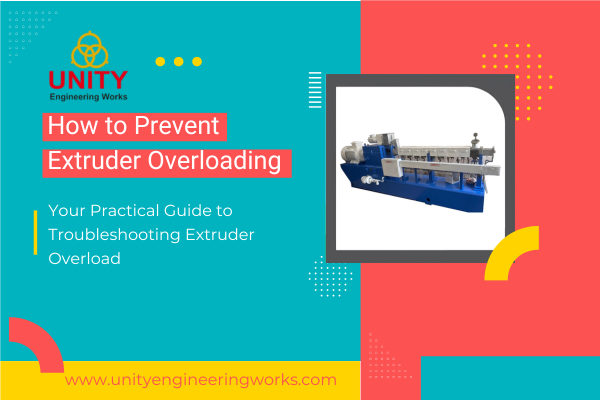Introduction: The Hidden Cost of Uneven Mixing
When you see color streaks, unblended resin, or surface defects in your PVC product, the root problem often lies in uneven mixing and poor dispersion inside the extruder.
For manufacturers, this issue means inconsistent output, high rejection rates, and energy waste all of which directly impact profitability.
To ensure smooth, uniform mixing, it’s essential to understand what causes this problem and how to fix it efficiently.
What Causes Uneven Mixing in PVC Compounding?
Incorrect Screw Configuration
The screw design defines how well materials are sheared, blended, and transported.
If mixing elements are missing or not positioned correctly, you’ll get localized poor dispersion zones.
Regularly review screw configurations based on the PVC formulation and additives used.
Improper Temperature Control
Uneven heating or cooling across barrel zones can cause partial melting or over-shearing.
Maintain consistent barrel zone temperature and avoid large fluctuations between zones.
Inconsistent Material Feeding
When the feeder delivers irregular material flow, mixing efficiency drops dramatically.
Ensure a steady, uniform feed rate and check feeder calibration every few shifts.
Over time, wear reduces compression and mixing efficiency.
Worn screws may not generate enough shear for proper dispersion, especially with filled compounds.
Poor Venting or Air Entrapment
Air or volatiles trapped in the melt create flow instability, leading to streaks or voids.
Check vacuum ports and vent seals to prevent entrained air.
Step-by-Step Troubleshooting Plan
Step 1: Check Visual Indicators
Look for signs like streaking, poor color uniformity, or inconsistent melt texture.
Step 2: Measure Melt Homogeneity
Use melt flow index or torque consistency to assess mixing performance.
Step 3: Inspect Screw Elements
Review your screw configuration drawing.
Replace worn or missing mixing elements.
Step 4: Balance Temperature Zones
Compare each barrel zone’s setpoint vs. actual reading.
Adjust gradually to stabilize melt temperature.
Step 5: Optimize Feeding
Use gravimetric feeders for precision.
Avoid material segregation in the hopper.
Step 6: Record and Validate Changes
Keep a maintenance log to compare performance improvements over time.
How to Prevent Future Mixing Problems
Regular Maintenance of Screws & Barrels: Schedule cleaning and inspection every 3 months.
Review Process Parameters Weekly: Stable temperature and pressure ensure steady mixing.
Optimize Screw Design for Each Formulation: PVC with fillers, stabilizers, or colorants needs tailored screw geometry.
Implement Material Quality Control: Ensure consistent particle size and moisture content in feedstock.
Train Operators to Recognize Early Signs: Prompt reaction to changes in torque or melt pressure prevents major issues.
Conclusion: Quality Mixing, Quality Output
Uneven mixing and poor dispersion don’t just affect color they affect the entire quality chain of your PVC production.
By adopting a proactive maintenance and process control strategy, you’ll achieve better homogeneity, stable output, and longer equipment life.
At Unity Engineering Works, we design precision-built twin-screw extruders engineered for superior mixing and dispersion performance in PVC, UPVC, and WPC compounding.
Need expert advice to improve your extrusion line?
Reach out to our specialists today at www.unityengineeringworks.com



